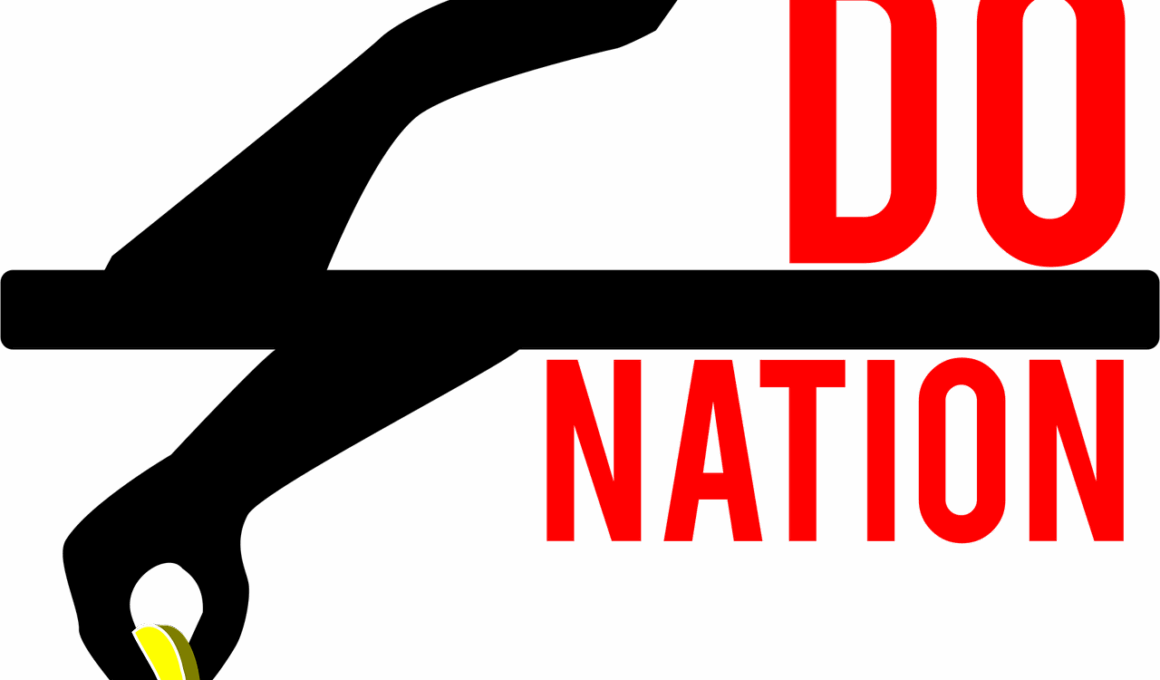Using Gamification to Enhance Non-Profit Fundraising Events
In today’s digital landscape, non-profit organizations are increasingly turning to gamification to enhance their fundraising events. By integrating game-like elements into their initiatives, these organizations can foster deeper engagement and attract more participants. Gamification effectively transforms traditional fundraising into an experience that emphasizes fun, competition, and achievement. Non-profits can implement leaderboards, badges, and rewards, creating a dynamic environment that motivates donors and participants alike. For instance, leaderboards can showcase top fundraisers, generating healthy competition among peers, which can lead to increased donations. Furthermore, rewards such as badges recognize and celebrate contributors, thus enhancing a sense of belonging. This approach also engages varying demographics, making events enjoyable for participants of all ages. By utilizing gamification techniques, non-profits can create memorable experiences that not only drive fundraising success but also promote community involvement and social interaction. In this article, we will explore effective gamification strategies that can contribute to successful fundraising events for non-profit organizations, ensuring that both goals of fun and contribution are achieved seamlessly.
One of the most powerful aspects of gamification is its ability to tell a story that resonates with participants. By framing fundraising goals within a compelling narrative, non-profits can create an emotional connection that encourages greater participation. This storytelling aspect can be enhanced with engaging visuals and immersive experiences. For example, organizations can create an interactive platform where participants progress through stages, each representing milestones in the fundraising journey. As individuals reach these milestones, they can receive virtual tokens or points that can be redeemed for rewards. This not only cultivates a sense of achievement but also reinforces the importance of the cause. Additionally, such narratives can be tailored to highlight the organization’s mission, thus fortifying the relationship between donors and the cause. By effectively leveraging storytelling through gamification, non-profits can amplify awareness, leading to increased donations over time. It’s crucial, however, for organizations to analyze their target audience and adapt their narratives accordingly, ensuring that the themes resonate and motivate involvement. Engaging all stakeholders is key to harnessing the full benefits of gamification.
Incorporating Technology for a Modern Twist
In the age of smartphones and social media, incorporating technology into event fundraising becomes not just beneficial, but essential. Through mobile applications or web platforms, non-profits can streamline their gamification efforts, allowing participants to track their progress in real-time on their devices. This modern twist not only enhances participant engagement but also caters to a tech-savvy audience, who appreciates the convenience of managing contributions and progress digitally. Apps can feature real-time leaderboards, shareable achievements, and opportunities for social sharing that boost visibility and reach. For instance, when participants share their milestones on social media, it not only encourages personal engagement but may also inspire their social circles to contribute. This ripple effect can significantly amplify fundraising efforts. Additionally, integrating elements like QR codes can allow event attendees to contribute and engage with the cause instantaneously. Thus, technology not only supports gamification but also streamlines donor interactions and simplifies the overall experience. Non-profits need to embrace tech solutions to reach and engage a broader audience effectively and sustain fundraising momentum.
Another important aspect of successful gamification is the concept of community building, which enhances the social aspect of fundraising. By encouraging participants to team up and support one another, non-profits can create a sense of camaraderie and belonging. Collaborative challenges or team-based fundraising initiatives can stimulate motivation, as groups work towards common goals. For instance, “team challenges” can be set where participants vie to achieve a collective fundraising target. This not only encourages contributions but fosters lasting connections amongst donors and volunteers. Additionally, offering collaborative rewards, such as group recognition events, can amplify this community engagement. By creating shared experiences, non-profits also enhance participant loyalty and retention, as individuals are more likely to return for future involvement when they feel connected to a community. Social media platforms can serve as instrumental tools, facilitating connections and interactions within these teams. As a result, organizations that prioritize community aspects in their fundraising efforts find greater success in engaging participants, cultivating loyalty, and ultimately driving their cause forward. Gamification must not only serve goals but also create a vibrant community around the cause.
Feedback Mechanisms Enhance Engagement
Effective gamification not only strives to engage participants during events but also encourages continual improvement through feedback mechanisms. Gathering participants’ opinions about their experiences allows non-profit organizations to identify areas for growth and enhancement. Incorporating short surveys or feedback forms post-event gives organizations valuable insights into what worked and what did not, allowing them to adapt their future fundraising strategies. Additionally, participants should feel that their opinions matter; thus, acknowledging their feedback can solidify trust and long-term loyalty. By showcasing how feedback has been implemented in subsequent events, organizations can further encourage contributions and participation. Alongside feedback, non-profits can utilize analytics on engagement and donation levels during the event to inform strategic decisions. Understanding which gamification elements resonated most with the audience helps tailor future initiatives. By continuously improving the participant experience, organizations can ensure that engagement levels remain high, fueling fundraising success. Fundraising events should serve as platforms for evolution; thus, collecting and implementing feedback is essential for building sustainable programs.
In an ever-changing landscape of donor engagement, it is also crucial to incorporate inclusivity within gamified fundraising events. Ensuring that all potential participants feel welcome and capable of contributing significantly enhances the success and outreach of initiatives. Non-profits must assess accessibility needs, considering the variance in abilities, backgrounds, and engagement preferences. For example, offering flexible challenges that accommodate different skill levels or providing various participation channels can maximize overall involvement. Ensuring that fundraising initiatives are inclusive can also target broader audiences, providing a wider scope for donations. Tools like low-barrier challenges or alternative engagement opportunities can make a considerable difference in attracting diverse participants. Additionally, collaborating with organizations that specialize in inclusivity can provide advisors on best practices, ensuring that all individuals feel valued and motivated to engage. By prioritizing inclusivity within gamification, non-profits not only increase their reach but also fortify their impact, resulting in broader support for their missions. Fundraising should aim to unite as many voices as possible in support of important causes, emphasizing empowerment through gamified elements.
Conclusion
As we look toward the future of non-profit fundraising events, gamification represents a powerful tool for enhancing participant engagement and success. By adopting game-like strategies, organizations can foster community, enhance storytelling, and build loyalty among their supporters. The integration of technology enables a seamless experience, catering to modern audiences who demand instant gratification and connectivity. Moreover, the continuous improvement derived from feedback and inclusivity enhances the effectiveness of these initiatives further, allowing non-profits to better serve diverse populations. By collectively emphasizing collaboration and the creation of vibrant communities, fundraising events can transcend mere monetary goals, shifting toward collective experiences that highlight positive social impact. Non-profits that embrace the enjoyable nature of gamification will likely find themselves at the forefront of fundraising innovation. Ultimately, by combining purpose with playfulness, we can significantly enhance our capacity to effect change and raise awareness for critical causes. Organizations should consider these gamification strategies essential in their fundraising toolkit, ensuring that they stand out in a crowded space, fostering deeper connections with supporters.
In conclusion, successfully utilizing gamification can lead to significant advancements in non-profit fundraising effectiveness. With various strategies and technologies available, organizations can drive engagement and unlock new potentials to catalyze social change. Embracing playfulness and creativity enables organizations to not only rethink their fundraising models but also to strengthen their missions through enhanced community involvement and sustained commitment from participants. Engaging donors and volunteers through gamified experiences creates an ecosystem where joy, investment, and contribution thrive together. Through each successful fundraising event, the lessons learned through gamification contribute to ongoing success and can inspire even broader participation for future initiatives.


